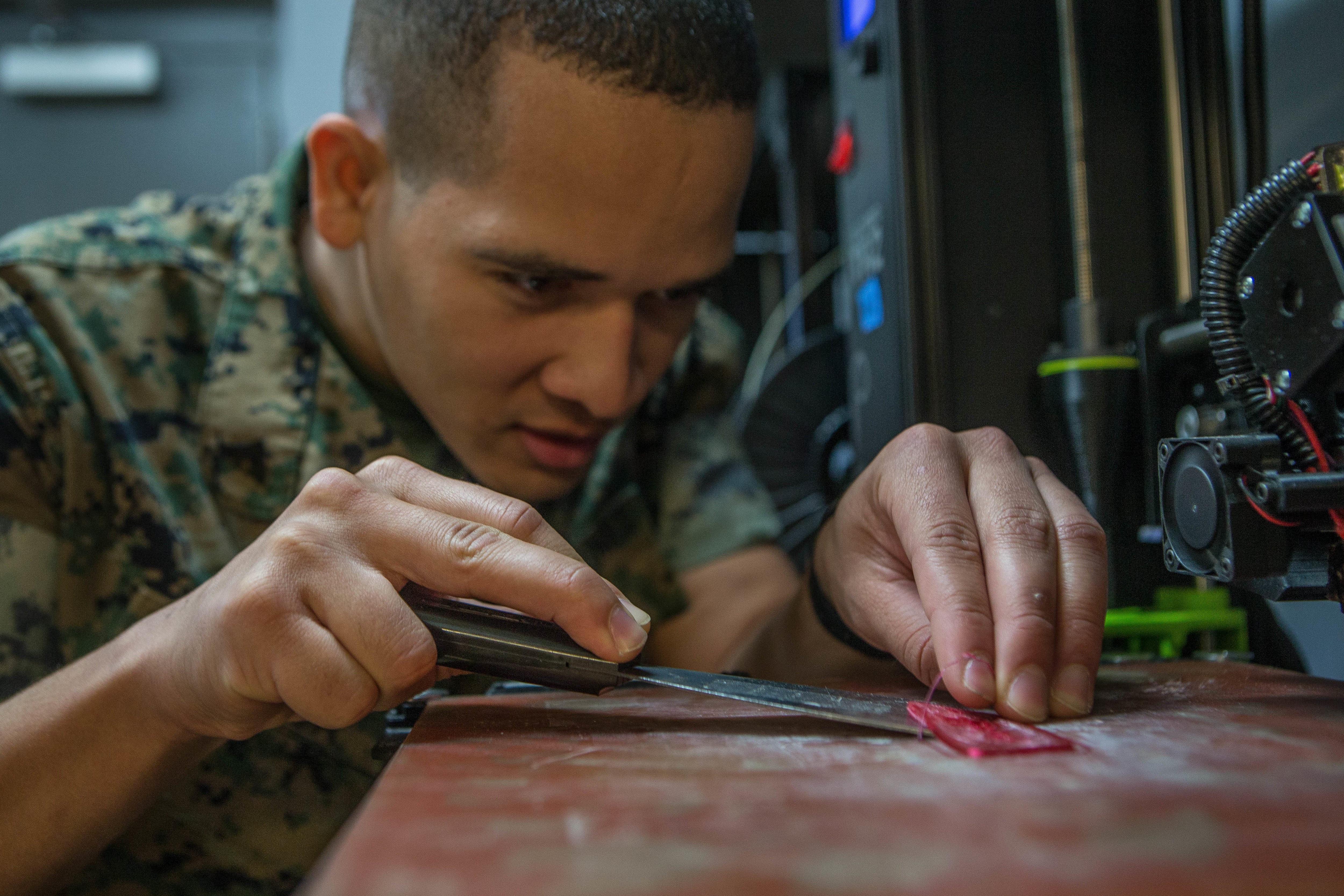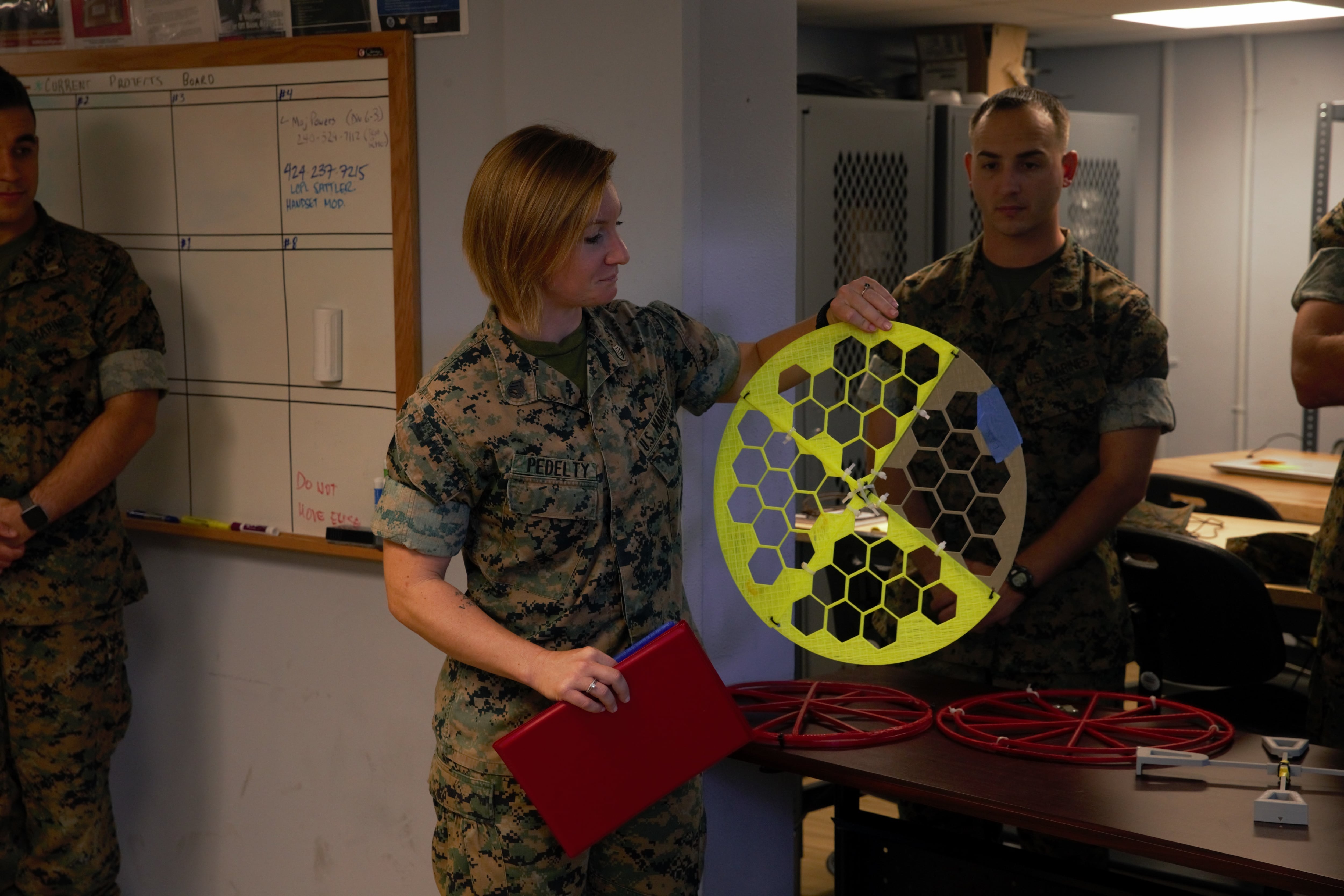From air duct covers, handset protectors, hard-to-get tools and scale model tanks, Marines have been pumping out cost-saving devices at new labs and in innovation challenges that use a “Shark Tank” style competition to surface good ideas regardless of rank.
The most recent winner of the 2nd Marine Logistic Group’s quarterly innovation challenge was Lance Cpl. Frederick Sattler, a field radio operator with Combat Logistics Battalion 2, at Camp Lejeune, North Carolina.
Sattler had been inventorying radio handsets for his unit, some of which are older models that don’t have covers for the metal screws, which can cause an electrical shock.
Units that needed to replace the old handsets were paying $52.50 per handset for new devices. But other than the exposed screws, the old handsets worked fine.
Sattler saw an open house announcement for the 2nd Marine Logistic Group’s lab and used the lab resources and classes to build a small plastic cover that secures around the older handset to protect users from the potential shock.
Instead, the lance corporal’s device costs .50 cents to manufacture.
That work won him the first quarter innovation challenge, a cash prize, Navy and Marine Corps Achievement Medal and recognition from Brig. Gen. Kevin Stewart, 2nd Marine Logistics Group commanding general, at a ceremony scheduled for Tuesday, according to a Marine Corps statement.
“Marines may often feel that they are unable to make solutions to problems they see around them a reality,” said 1st Lt. Walls, 2nd Marine Logistic Group innovation officer. “Makerspace bridges that gap and allows them to break the bureaucracy and enact those solutions and provides them the tools to do so.”
The Marine Corps started innovation challenges in 2016 with both “maker” and “wearables” challenges, Marine Corps Times previously reported.
Those have evolved into quarterly challenges at each of the Marine Logistics Groups.

Past Corpswide challenges have focused on lightening gear and tracking physical fitness. The Makerspace facilities allow for Marines to learn some of the skills they’ll need to put their idea into use.
Though, adopting any of the devices or material fixes still requires evaluation and testing by Marine Corps Systems Command.
In 2019, Staff Sgt. Elissa Pedelty, a utilities Marine with Combat Logistics Battalion 24, 2nd Marine Logistic Group, used a 3D printer to make a duct cover that connects to the environmental control unit used for air conditioning large-scale tents and command centers.
The cover keeps loose items from being sucked into the duct and damaging the motor.
Pedelty was awarded a $1,000 prize and a Navy & Marine Corps Achievement Medal for her winning project.

The 2nd Marine Logistic Group Makerspace facility also has helped Marines build scale-model tanks for Marines with 2nd Tank Battalion who were able to use the models for vehicle identification and weapon system sighting practice without having to go to the range.
The concept is similar to sighting rifles on shooting barrels, according to the release. By knowing the scale of the 3D printed tank, Marines can sight in their vehicle weapons system in the motor pool.
And Marines also were able to make a tool needed by 8th Engineer Support Battalion to measure bulk liquids that had been on order for more than 500 days.
And their version was smaller and stronger than the one on order through standard channels, said Cpl. Wesley Swinney, a ground electronic maintenance Marine temporarily assigned to the Makerspace lab.
“Your background does not limit you,” said Cpl. Wesley Sweeny, “It’s not a think tank. It’s a do tank.”
Marines who want to find out more about quarterly challenges or unit Makerspace open houses, contact your respective Marine Logistics Group.
Todd South has written about crime, courts, government and the military for multiple publications since 2004 and was named a 2014 Pulitzer finalist for a co-written project on witness intimidation. Todd is a Marine veteran of the Iraq War.





